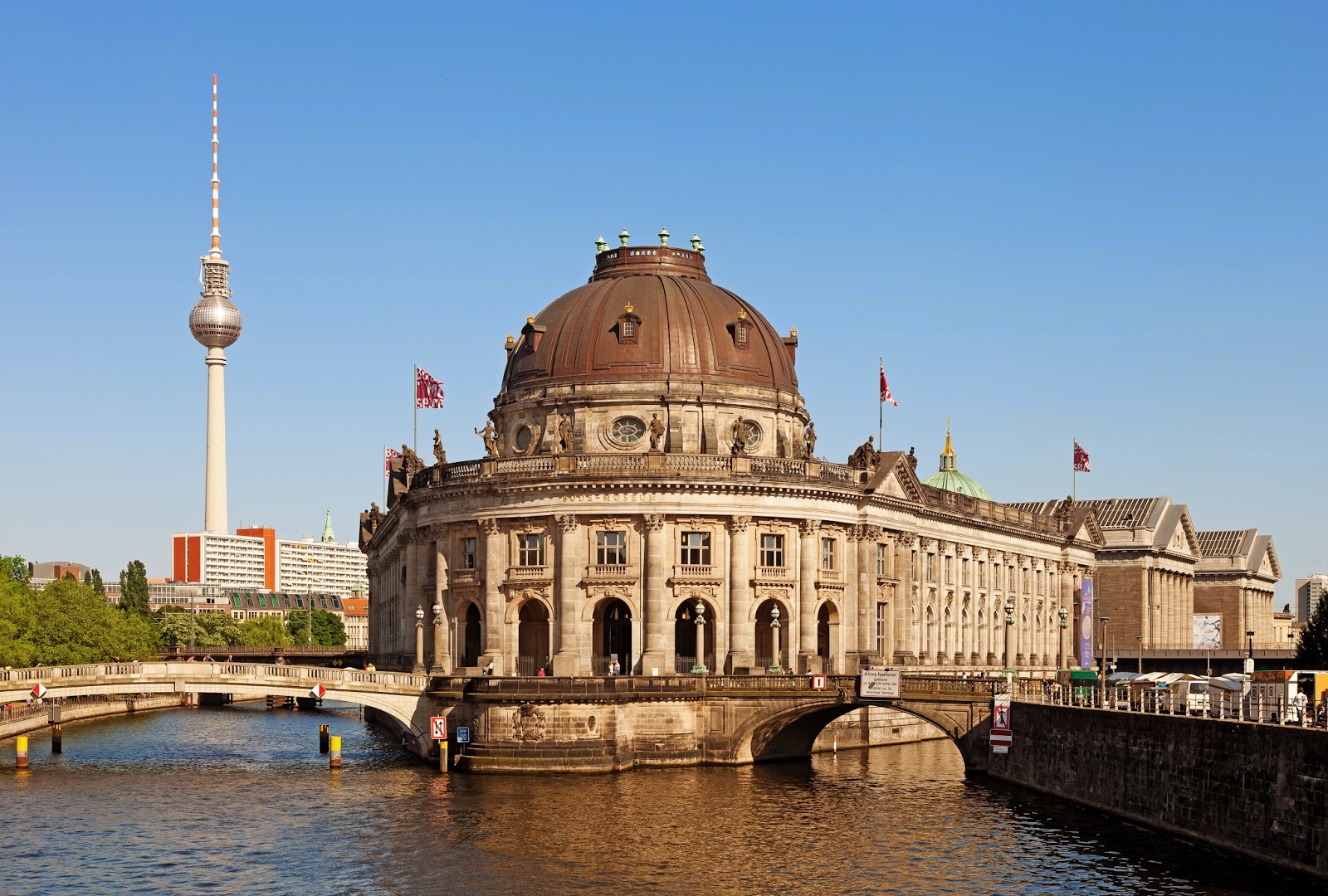1. East Berlin
East Berlin today may be rejoined with the West, but the feel is decidedly different, so be sure to include the former capital of the German Democratic Republic in your itinerary plan. Start with a jaunt through the Brandenburg Gate, one of the city's most enduring symbols and the site of U.S. President Ronald Reagan's famous "tear down this wall" speech. You'll be passing through some seriously contested territory, as the gate once stood in a barren strip separating the East and West halves of the city. Swing by the Alexanderplatz as well--this local meeting place is one of the best examples of dubiously-titled "Communist chic." Horrifically grey buildings aside, stopping by the square grants you a killer view of the looming TV tower and plants you squarely in the center of former East Germany's public life.
Berlin Museum island
2. Leipzig
Take a trip to Germany back to the glory days of pre-war Germany by exploring the charming cafes and stately buildings of old Leipzig. One of Germany's historical centers of trade, the city hasn't lost its edge for industry and development. Wander in the Altstadt, or old town center, and soak up the part-medieval, part-Renaissance splendor mixed with ornate 18th-century architecture. Don't miss stopping by the Old Town Hall to learn even more about the life and times of this lively town, and spend some time in the bustling Market Square to get a feel for this powerhouse of a city.
3. Potsdam
Head for Potsdam to feel like you're living large with Frederick the Great and the monarchs of Europe's decadent age of the 18th century. Forget the fact that this is a suburb of Berlin--the atmosphere is hardly the same as that of the capital. Packed with vintage mansions, palaces, and sculpted gardens, this town is also the country's biggest World Heritage Site. Take in the splendor and luxury of Sanssouci Palace and the adjoining Sanssouci Park, two of Frederick the Great's most prized properties, and you might begin to understand how well European royalty lived. You’ll pass ornate wing after ornate wing of the huge residence, sporting carved statues, decorative molding, and golden triumphal monuments.
4. Dresden
Resilient Dresden is a real-life story of a town rising from the ashes--after Allied bombing obliterated its beautiful city center during World War II, the the city rebuilt many of its historical attractions. Soak up Dresden's former glory by wandering its cobbled streets and grand promenades, lined with centuries-old, pastel-colored stately homes and residences. Head to Zwinger, a part of the city's old fortress, and get your fill of its luxurious Rococo architecture and gardens bursting with decorative fountains. Alternatively, architecture buffs can opt for a visit to Pillnitz Castle and Park, a fabulous tan-and-orange Baroque mansion that, even more enticingly, stands on the foundations of a medieval estate.
5. Wernigerode
Don't leave this town without making your way to Wernigerode Castle, a masterpiece of a Baroque mansion with towers, turrets, and peaked rooftops that pay a classic tribute to its 13th-century heritage. While the original owners may be gone, the castle's charm remains, so give yourself plenty of time to explore this extensive complex that recalls images right out of a fairy tale. Afterward, stroll the grounds to admire the picturesque building from a distance. The town itself features a fair bit of nightlife in the form of bars and restaurants, so hit the town for a traditional meal or a few cold pints of famous German beer.
Catch the spirit
For a good part of the 20th century, eastern Germany couldn't catch a break, with economic depression, devastating war, and brutal oppression casting a serious pall over many of its cities and towns. However, delving into some of its most notable cities shows you that this hasn't broken the region's upbeat spirit, and you can find plenty of bustling urban centers, idyllic residences, and noble splendor.





No comments:
Post a Comment